Dental implants are the artificial tooth roots used to help restore a missing tooth or teeth and help prevent jaw bone loss. By restoring missing tooth roots, dental implants help improve their teeth and offer people the strength and stability needed to eat, without struggling to chew. Also, they help stimulate and maintain jaw bone, prevent bone loss, and help support the facial appearance. Among various types of dental implants, zygomatic implants are an evidence-based surgical and prosthetic solution for both two-stage and immediate loading protocols. The No Bones Treatment utilizes modern technology and longer implants to reach dense bone far under their gum line. This helps the titanium screws to dig into the compact bone for a better osseointegration process. Even better, the procedure is appropriately customized for each patient based on the structure of their mouth.
To ensure the successful dental implants over time, they must adequately fuse to the bone. The procedure’s success depends on the patient possessing enough volume of bone that is also dense enough to go through the process. As traditional implant treatment helps secure titanium screws to the patient’s jaw and affixes replacement teeth on top of them, enough bone mass is essential. Those with fragile or deteriorated jawbones are not usually good candidates for implants. Such loss can happen in a multitude of ways like oral cancer, dentures, tooth loss, etc., are all likely culprits. Any of these adverse conditions will render the implants unable to fuse with the bone properly. Before the recent technological developments, patients with these problems were confined to two options: dentures or an invasive bone grafting procedure.
How does Zygomatic Implants work?
The first step in the ‘no bones treatment’ is a CT scan, which shows a 3D image of the patient’s jaw is subsequently used to create a customized implant. Though this process is mostly reliant on digital technology, the implants are usually partially fitted. Additionally, implants can also be fixed into the cheekbone for successful fusion. While the final surgery is undoubtedly a critical phase, the essential parts of the treatment are the modeling and the designing processes, both of which help the success rate.
The procedure can be done in just a few sessions. The first session includes the diagnosis. During this phase, the patient’s mouth is also examined to determine whether a normal or ‘No Bones procedure’ will be more helpful. The second session is done where the implants are inserted inside the cheekbone of the patients. After the screws are implanted, your dentist will fixup replacement teeth. The third session is typically done after at least 13 weeks after the implant surgery. Here, the final impressions are taken and sent to a laboratory to create a permanent set of teeth. In the final stage, the dentist installs a stable set of customized teeth.
Zygomatic Implants and No Bone Solution Treatment
The zygomatic implants are self-tapping screws in titanium with a distinct machined surface. Zygomatic implants have been documented as a substitute for the atrophic posterior maxilla rehabilitation with both the classical two-stage and immediate loading protocols. Zygomatic implants avoid grafting and sinus lift process and therefore provides a shorter and more comfortable treatment. They are obtainable in eight different lengths, ranging from 30 to 52.5 mm. They are presented in a unique 45° angulated head to compensate for the angulation between the zygoma and the maxilla. The part that involves the zygoma has a diameter of 4.0 mm. The part that engages the residual maxillary alveolar process a diameter of 4.5 mm. The primary indication for zygomatic implants is the critically resorbed edentulous maxilla. Still, they can also be used in partially edentulous situations. Signs for zygomatic implant insertion include: a substitute for sinus augmentation, failed sinus augmentation, rehabilitation after tumor resection or trauma, failure in conventional implants, failure of previous bone grafts, etc.
The provisional prosthesis helps both the patient and clinician as well. The lack of compression of the post-operative soft tissue is easier to use for the patient. The prosthesis is assisted by the implants and not by the soft tissue of the surgical site. Patients also benefit from improved self-esteem. The immediately loaded prosthesis does not move, allowing for more confident speech and enhanced appreciation of foods due to lack of palatal coverage. Patients should always receive appropriate and comprehensive aftercare instructions for their immediately loaded prosthesis to help ensure the success of the treatment plan.”
Once you have concluded that you require dental implants, you need to determine whether your jawbone is too degenerated for the treatment. The substitutes, dentures, or bone grafting are not as comfortable as a fresh set of implants and can discourage patients from doing any work. This is because dentures and bone grafting do come with the issues that make them somewhat counterintuitive to fix the problem in the long run. Hence one needs to go for no bone solution treatment before dental implants.
Implants Pro Center© offers a consultation at your convenience. You can learn more about dental implants and Implant Pro Center’s treatment approaches. Find out today how dental implants can change your life. At Implants Pro Center©, we take all primary dental and medical PPO insurances and Medicare, thereby decreasing your anxiety about the expense of dental implant treatment or any oral surgeries. A tremendously experienced and caring team will give life-long care, maintenance, and assistance. Implants Pro Center© is also decked with modern technologies like CT-Scan, Intravenous Sedation, Platelet Rich Fibrin, etc. to present nothing less than the best of services. You will be entirely at ease for any of your surgeries.

